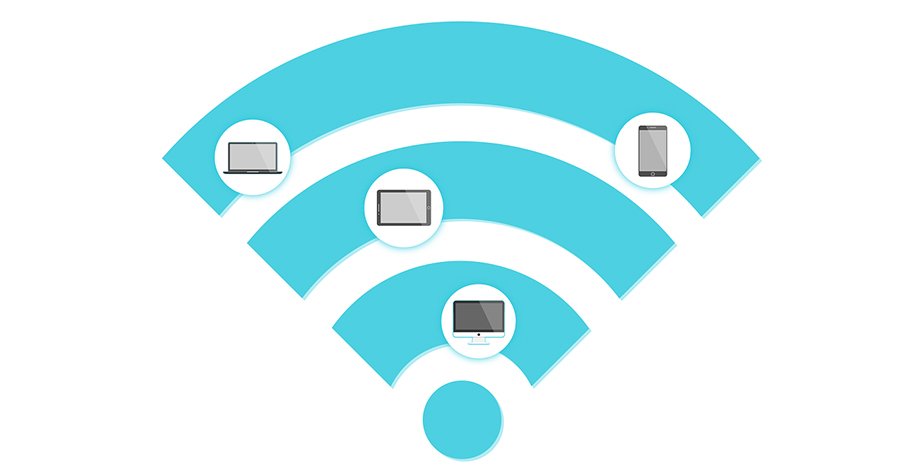2.4GHz vs 5GHz Wi-Fi. Which One is Better?

2.4GHz and 5GHz are measurements used to determine the frequency range of WiFi network signals. They are radio bands that can determine two of the main features of WiFi – speed, and range. Even though you may think more is better, there are many differences that provide both pros and cons for each band.
Luckily, you are now going to discover the main differences that really count when it comes to 5GHz vs 2.4GHz WiFi signals. As a result, you will know which one to go for when it comes to choosing an option that will allow improvement to your WiFi, given that the network provider you are using supports the specified frequency, which they almost always do.
Main Differences Between 2.4GHz vs 5GHz WiFi

It’s impossible to get identical features with both of these frequency bands. As much as I’d like to eliminate the process of choosing for you, you still have to decide which one suits you better. Hopefully, you will know exactly what you need by the end of this article. As I said, both of them feature unique advantages and disadvantages, and here are the main things you need to know before making your choice.
We will focus on the two main areas – speed, and range. This will allow you to choose based on how fast your internet will be and how much of your home it can cover. For some, the range isn’t a problem but they need fast WiFi for work, gaming, and similar. When gaming is in question, on top of a great router, you can also add one of the best WiFi cards to your PC setup and make things significantly better and faster.
On the other hand, others don’t care about the speed but they need the signal to reach every part of their home. We’ll also talk about stability as another crucial feature. Even though there are other factors that can affect this, one still outperforms the other.
2.4Ghz vs 5GHz: Speed
When it comes to WiFi speed, you will be happy to know that the 5GHz band performs much better than 2.4GHz WiFi. Why is that? It all has to do with the length of the WiFi radio waves. The 5GHz spectrum features shorter radio waves, resulting in faster speeds but lacking in other areas that we will talk about later. The important thing to know here is that the shorter the radio waves the faster the signal will be, and commonly with less interference.
2.4GHz frequencies transmit data at a much slower rate than 5GHz. This also has to do with the length of the radio waves. So, the key takeaway here is that if speed is a big concern, you will be able to send, receive, upload, and download files much quicker with 5GHz than with 2.4Ghz.
In some cases, you may upgrade to 5GHz and witness your laptop not being able to connect. It may be because it’s an older laptop and its WiFi card doesn’t support that frequency band. In such a case, using a USB WiFi adapter is the best and most cost-efficient way to fix the problem.
Key Takeaway: 5GHz WiFi transmits data much faster than 2.4GHz!
2.4Ghz vs 5GHz: Range
Things quickly turn around and change sides when it comes to range. Where the 5GHz WiFi outperforms the 2.4GHz with speed, it’s the other way around when signal range is in question. There are rules in this case, which state that the shorter the wavelength the faster the data transfer but also the shorter the range.
Having said all of that, given that 2.4GHz has a longer wavelength, the area it covers will be much broader than it is with 5GHz. Keep in mind that this sacrifices speed, so choose accordingly based on what your priority is – either speed or range. These will be the two main factors upon which you can make your decision.
Key Takeaway: 2.4GHz covers a wider area than 5GHz as a result of the mentioned reasons above!
Stability and Coverage
Lastly, we need to take into account signal interference and the stability that these two WiFi frequency bands can provide.
The 2.4GHz band provides more coverage and a wider area, however, this frequency band is also prone to much more interference than the other. This may have a lot to do with the fact that there are generally way more devices connected to this frequency rather than the 5GHz one. On the bright side, the 2.4GHz frequency penetrates solid objects much more efficiently, allowing for better coverage throughout the house in spite of furnishing and thick walls.
The 5GHz frequency experiences barely any interference mainly because of the same factors that apply to the 2.4GHz. There are fewer devices that use this frequency, allowing for much better signal strength. On the downside, 5GHz is relatively bad at penetrating solid objects compared to 2.4GHz, which makes for less dependable WiFi coverage.
How to Choose the Best WiFi Frequency Band for You?

It’s safe to say that it’s a lot easier to choose now that you know how each of these frequency bands performs. You shouldn’t listen to anyone telling you one is better than the other, as your choice needs to be yours alone, based on your personal needs and situation.
This means that you must consider what you need WiFi for the most. Do you need it for a great gaming experience? Maybe for your business or office? Or, maybe you just want to chill at home and have a WiFi signal throughout your entire house? Whatever the case, now you know all of the weaknesses and strengths between the 2.4GHz and 5GHz WiFi frequencies.
2.4GHz WiFi Key Features
- 410ft Average Signal Range
- 150Mbps Max Speed
- Slower Data Transfer Rate
- Experiences More Interference
- Great Solid Object Penetration
5GHz WiFi Key Features
- 195ft Average Signal Range (it can reach 410ft if amplified or if you use a decent WiFi routers for long range)
- 1Gbps Max Speed
- Faster Data Transfer Rate
- Experiences Less Interference
- Poor Solid Object Penetration
Please explain this on
5GHz – faster, smaller range
2.4GHZ – slower, bigger range